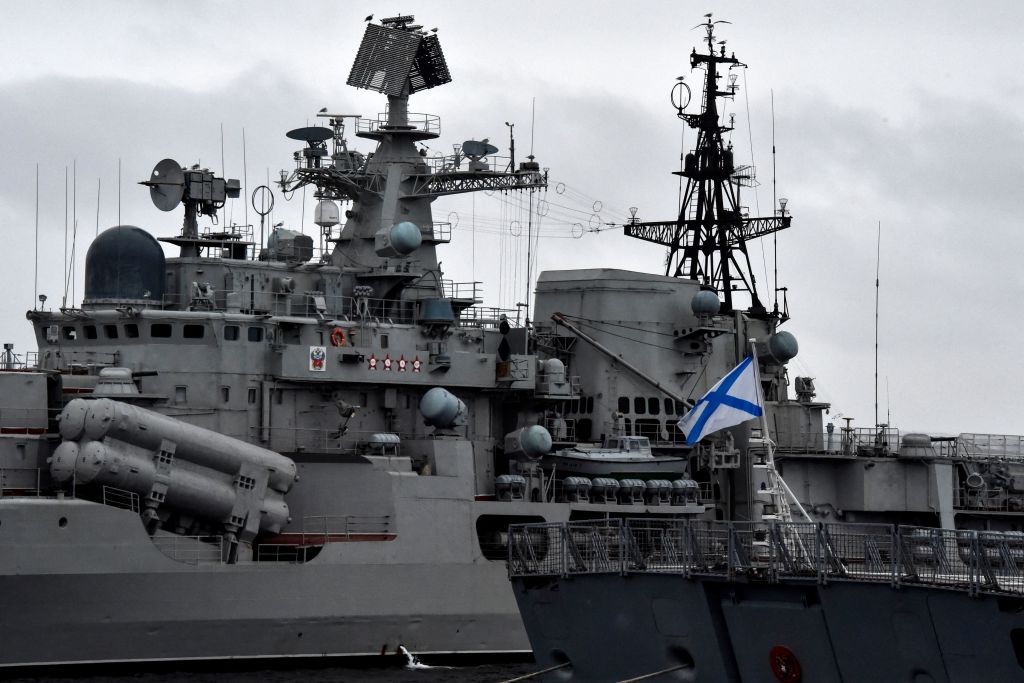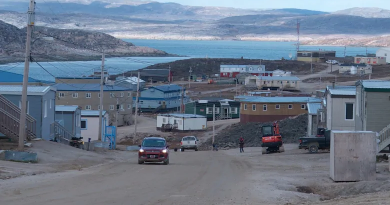Northern Fleet faces wide gap between ambitions and resources, intel report

The combat power of the Russian Navy is under pressure and forces the Northern Fleet to chose between solving missions and performing necessary maintenance, the Norwegian Intelligence Service says.
As the war against Ukraine occupies much of Russia’s land power, the navy are increasingly struggling with resources, the Norwegian Intelligence Service (NIS) states in its latest threat assessment report FOCUS.
The Norwegians have always kept a special eye on what happens in the Russian North. No stange as a key leg in Moscow’s nuclear deterrence, the ballistic missile submarines, are based not far from the border.
“The Russian naval forces are facing a widening gap between ambitions and resources,” the report tells.
The NIS says the navy is caught in a dilemma: “This is forcing the Northern Fleet to choose between solving missions and performing necessary maintenance. Difficulties at the shipyards cause maintenance backlogs that impair many aging vessels’ capability.”
Combat power in the Northern Fleet is under pressure and affects possible force generation, the FOCUS report presented in Oslo on Wednesday concludes.
The Northern Fleet is the largest of Russia’s four fleets. Headquartered from Severomorsk north of Murmansk, it practically occupies most of the coastline towards the border with Norway.
Studying satellite images of shipyards on Kola and in Severodvinsk by the White Sea tell the same story; warships are piling up, stay in dock longer, and are often served by vital pieces of equipment, like cranes, that are non-functional.
In general, the Northern Fleet has a lack docking capacity at all shipyards on the Kola Peninsula; No. 35 in Murmansk, No. 82 in Roslyakovo, No. 10 in Polyarny and at the Nerpa yard.
Last fall, the anti-submarine destroyer Severomorsk came north again after spending a yard at at a navy yard in Kronstadt outside St. Petersburg. There were simply no free capacity at the yards on the Kola Peninsula.
Lack of ability to follow up ambitions set by the Kremlin and the Defense Ministry in Moscow can be exemplified by two of the largest surface warships; the aircraft carrier Admiral Kuznetsov and the battle cruiser Admiral Nakhimov. The Barents Observer has over the years multiple times reported on the two giant vessels “soon being ready for sea trials.”
Facts have turned out to be different. Both are now years behind schedule.
The saga of Admiral Kuznetsov
When the Navy announced repair of Russia’s only carrier, the Admiral Kuznetsov, in 2017, it was made clear that voyages would resume three years later. The carrier was lifted in the largest floating dock available at the yard in Roslyakovo, but in 2018 the dock sank and Admiral Kuznetsov got damages to her flight deck. A year later, a fire started under welding work, causing further impairment. In 2020, awaiting a new land-based dock to be built at the naval yard No. 35 in Murmansk, work to replace the main boilers and turbo-gear units was delayed, but in 2021 the director of the shipyard was arrested after stealing millions of rubles from the carriers repair budget.
The aircraft carrier is still moored in Murmansk, while state-media reports continue claiming she is “… soon ready for sea trials.”
New submarines
An exception from the trouble Russia’s Navy is facing is the submarines, the NIS report underlines.
Construction of 4th generation ballistic missile submarines and multi-purpose subs happens in a speed, and with numbers, not seen since the last part of the Cold War in the 1980ties.
The Northern Fleet’s third top-modern, heavily-armed, Yasen-class, named Arkhangelsk, was in late January transferred from the construction yard in Severodvinsk to her home base in Zapadnaya Litsa, not far from the border with Norway. More of the class will come in the years ahead.
The NIS report says these submarines will maintain a presence and provide deterrence close to Norwegian borders. The Norwegian intelligence can also tell that the Northern Fleet will “… prioritise regular deployments to the Atlantic Ocean, and possibly a large-scale strategic naval exercise.”
The Yasen-class subs are armed with the new Tsirkon missiles, that worries Norway.
“The missiles’ extremely high velocity makes them very difficult for air defence systems to handle,” the report says.
Borei-A and Khabarovsk
Three, maybe four, of the Bulava-missile carrying Borei-A class submarines will be deployed with the Northern Fleet within the coming few years.
A big question for 2025 is whether the first of the new Khabarovsk class submarines will be rolled out from the halls at the Sevmash yard. This mysterious submarine is said to be carrier of Putin’s new leg of nuclear deterrence, the Poseidon nuclear-powered underwater giant drone.
According to the intelligence report, the drone, however, is still under testing and development and it will still be several years before Russia can deploy the doomsday weapons.
Meanwhile, the Norwegians, who share the important fishing grounds in the Barents Sea with Russia, worries about the ongoing testing of the nuclear-powered drone.
That happens in Russia’s western Arctic waters.
Related stories from around the North:
Canada: “Time is crucial now” warns Canada’s defence chief of Arctic threats, Eye on the Arctic
Finland: US in Greenland could improve Arctic security, Finnish defence minister suggests, Yle News
Denmark: Faced with Trump’s Greenland threats, Denmark seeks support from EU partners, The Associated Press
Greenland: Greenlanders overwhelmingly oppose becoming part of the United States, poll shows, Reuters
Norway: Norway’s Finnmark brigade to boost Arctic border defence, reevaluate training limits, The Independent Barents Observer
Russia: New radars sharpen Russian air defence over northern Finland, Norway, The Independent Barents Observer
Sweden: Swedish PM on Trump comments: Only Denmark and Greenland decide, Radio Sweden
United States: Trump again calls to buy Greenland after eyeing Canada and the Panama Canal, Eye on the Arctic



